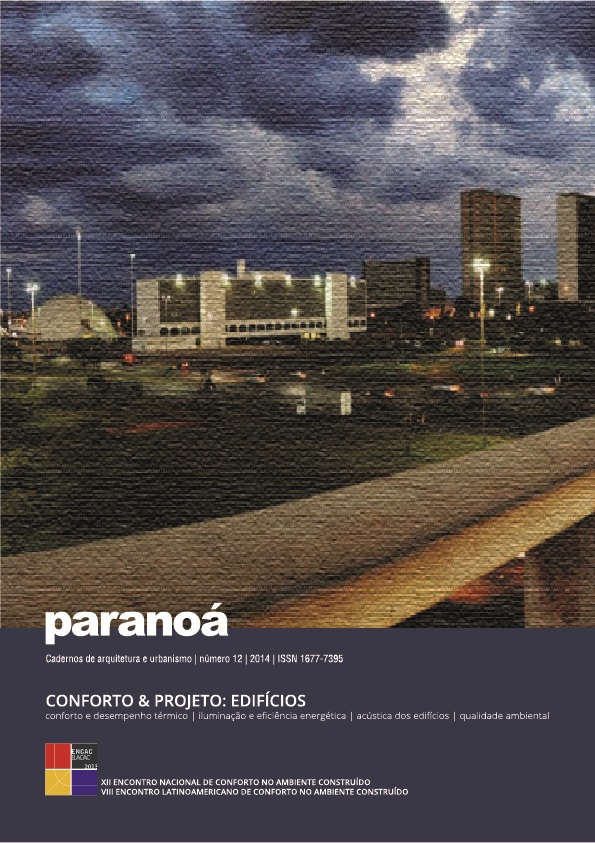Isolamento do ruído de impacto com resíduos de pet e pneu - análise preliminar de dados
DOI:
https://doi.org/10.18830/issn.1679-0944.n12.2014.12301Keywords:
Impact sound insulation, Pet residue, Tire residueAbstract
Population growth has created several problems in contemporary society. Among them are the increasing waste disposal and the lack of affordable housing. The aim of this work was to study the potential use of two solid waste in the manufacture of floating floors to reduce the impact noise propagation through partnerships with Furnas Centrais Elétricas and UFG. The samples were prepared with the PET bottle flake and rubber tire residues used in ciment mixtures in ratios of 1:4 and 1:5 (ciment: residue). These had different thicknesses over which a portable mortar slabs with two types of ceramic tiles were places. For the tests procedures, ISO 140-7 was consulted for measuring the standardized impact sound pressure level (L’nT) and ISO 717-2 for determining the unique value of the weighted standardized impact sound pressure level (L’nT, w). Among the results, 5 samples with PET obtained higher results than the other samples. It is concluded that samples with PET residue outperformed the samples with tire residue. However, both residues have a potential use in the application of floating floors, but need further studies for technical application.
Downloads
Downloads
Published
How to Cite
Issue
Section
License
Autores que publicam nesta revista concordam com os seguintes termos:
- Autores mantém os direitos autorais e concedem à revista o direito de primeira publicação, com o trabalho simultaneamente licenciado sob a Licença Creative Commons Attribution que permite o compartilhamento do trabalho com reconhecimento da autoria e publicação inicial nesta revista. http://creativecommons.org/licenses/by/4.0
- Autores têm autorização para assumir contratos adicionais separadamente, para distribuição não-exclusiva da versão do trabalho publicada nesta revista (ex.: publicar em repositório institucional ou como capítulo de livro), com reconhecimento de autoria e publicação inicial nesta revista.
- Autores têm permissão e são estimulados a publicar e distribuir seu trabalho online (ex.: em repositórios institucionais ou na sua página pessoal) a qualquer ponto antes ou durante o processo editorial, já que isso pode gerar alterações produtivas, bem como aumentar o impacto e a citação do trabalho publicado (Veja O Efeito do Acesso Livre).















